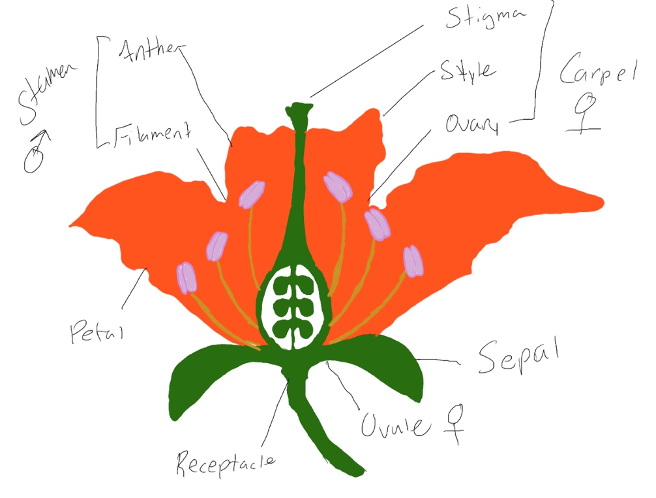Parts of a Flower

The main parts of a flower are:
Sepals: These are the outermost part of the flower and are typically green and leaf-like. They protect the flower bud before it opens.
Petals: These are the colorful, often fragrant parts of the flower that are responsible for attracting pollinators like bees and butterflies.
Stamens: These are the male reproductive parts of the flower and are made up of a stalk called the filament and an anther, which produces pollen.
Pistil: This is the female reproductive part of the flower and is typically located in the center of the flower. It consists of three parts: the stigma, the style, and the ovary. The stigma is the sticky, receptive surface that collects pollen, while the style is a stalk that connects the stigma to the ovary. The ovary contains one or more ovules, which will eventually develop into seeds if fertilized.
Together, these parts work to attract pollinators, produce and transfer pollen, and facilitate fertilization and seed development.